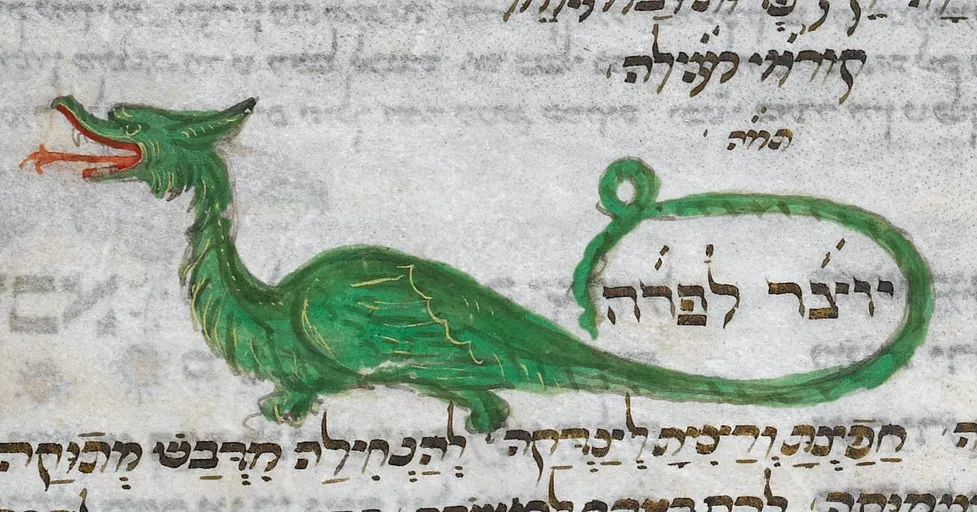In which we discover that marital problems can be resolved by supernatural means as long as you’re not too picky about the outcome, that everyone loves Parkin and that you should never, ever bake when angry, especially when there are dragons about.
In which we discover that marital problems can be resolved by supernatural means as long as you’re not too picky about the outcome, that everyone loves Parkin and that you should never, ever bake when angry, especially when there are dragons about.
The Recipe in this episode is Perfect Parkin
The story in this episode is Billy Biter and the Round Parkin from Lost Folktales of the English Counties
If you would like to find more information about any of the stories, books or research mentioned in this episode you can find them in Further Reading.
You can also find out more at Hestia’s Kitchen which has all past episodes and the connected recipes on the blog. If you’d like to get in touch about the podcast you can find me on Twitter or Instagram at @FairyTalesFood.

Always Listen to the Wise Woman
What did you think of this? Did you feel sorry for the dragon or for Hepzibah or were you firmly on the side of Billy and the cat? Hepzibah certainly demonstrated some abusive behaviors and Billy was treated very badly. In our century we might have tried to get her some help, considering her actions to be as a result of her addiction. However, this is not a tale of our times so we probably shouldn’t judge her punishment too harshly.
I’m a big fan of the wise woman in the tale. I wonder how much magic was in that piece of Parkin for Hepzibah. I suspect there wasn’t any, but that her recipe was so good she knew it would infuriate Hepzibah into trying to make a better one. The magic that made the Parkin for the Dragon must have been hers though.
Story Collecting Controversy
There is some controversy about where this tale came from. It was officially collected by Ruth Tongue in the 1967 from a groom who heard it in 1905. There was no proof of this and some consider that Ruth was not too careful in her collecting. Some experts believe that she embellished the tales she heard and retold them in her own style. Some even believe that she invented some of the tales that she said she collected.
It is difficult to prove either way, as she explained that many of her notes were lost in a house fire. You can read more about the controversy in the Writing in the Margins blog. What is not in question however, is her wonderful ability as a storyteller.
Storytelling Detective
I decided to do a little investigation around the tale itself to see if I could find any other similar tales from the area told by other people that might suggest that the tale was collected even if it was embellished. There are a couple of other local stories both centering around the dragon and parkin. One is very similar but uses the tale to establish how Parkin was named after Ralph Parkin who uses his wife’s Parkin to destroy the dragon in a similar fashion. The other tale seems to be an amalgam of both with Billy Biter being described as a nickname for Ralph Parkin. There seems to be enough doubt around the source of the tales that we can give Ruth Tongue the benefit of the doubt at least.
Interestingly there is another tale of the origin of Filey Brigg which involves the Devil, a hammer and the naming of the fish Haddock. It lacks the structure of our tale and is very simplistic but you can decide which local legend you prefer.
Yorkshire Dragons
In my hunt for tales around Filey Brigg, I as fascinated to discover the richness of dragon-lore in Yorkshire. There are several wonderful tales of dragons or as they were known in the county: worms – a name taken from the Norse Ormr, a serpent or dragon.
The tales include The Nunnington (or Loschy) Worm, the Sexhow Worm, The Handale Worm, The Kellington Worm and the Slingsby Serpent. As you would expect the dragon or worm is defeated but there are only two actual happy endings from these tales. One involves that of an anonymous passing knight who deals with the serpent and then goes on his way, refusing all thanks and refreshments. I assume he was happy anyway, clearly he enjoyed anonymity. The other happy ending is traditional where the hero also gets the damsel who has been captured by the dragon. He also inherits the local manor and becomes a wealthy landowner.
Dragon-Slaying: A Warning
However, should any of you wish to take up what can clearly be a rewarding career, I must add the disclaimer that three out of these five tales did not have a happy ever after. They were also all accompanied by dogs who assisted them (in some cases did most of the work). I won’t share all the details but all the dogs sadly passed away either from their wounds or from broken hearts from the death of their owners. Dragon-slaying is not for everybody.
Dragon-Slaying: Memorials
There are even some tombstones or memorials to these heroes in local churches, In the churchyard at Kellington there is an stone placed horizontally, which may have been the cover of a stone coffin,into which is cut what appears to be a cross, and on the right side of it a man with clasped hands, a dog at his feet. There are also some indecipherable marks, which may have represented a serpent. This stone is supposed to have represented the shepherd hero in the tale.
In Nunnington church is the tomb of a knight, Walter de Teyes, with an effigy of him lying with his feet on a small lion; locally, this is believed to represent Sir Peter Loschy and his dog. There is also another church effigy shows a cross- legged knight with a dog at the church at Slingsby.
Folklore Can be Twisty
Yorkshire is clearly a place for dragons and tales of their downfall so maybe our Parkin tale arose naturally from other local dragon tales but some Filey local folklore has twisted itself into the tale. There was enough information available that local historian Kath Wilkie investigated the Filey Dragon for some time. It certainly seems that communities want to be associated with these brave and sometimes tragic heroes. As Jacqueline Simpson says in her book British Dragons:
“That the lord of the manor should be descended from a dragon-slayer, that a dragon should once have roamed these very fields, or, best of all, that an ordinary lad from this very village should have outwitted and killed such a monster – these are claims to fame which any neighbouring community would be bound to envy. And even when no one believes the story any longer, it still can function as a kind of mascot, laughed at yet loved, giving its name to pubs and carefully passed on in local guidebooks.”
Finally to Parkin
We have yet to look at the other element in the tale, the Parkin itself. Traditional Yorkshire Parkin is a gorgeously sticky, soft gingerbread cake made with oats, treacle and spices. It is at its best if allowed to mature for several days after baking. This treat is traditionally eaten on bonfire night, best on a cold damp night with the scent of woodsmoke all around. Some historians believe earlier versions were eaten to celebrate celtic seasonal celebrations around this time.
Gingerbread Lore
Parkin doesn’t have folklore of its own specifically but gingerbread in general does have some. It used to be believed that certain shapes were charmed. Heart shapes were for love, rabbit shapes were to increase fertility. If you could persuade the man of your dreams to eat the gingerbread man that had been baked for him, then your happy ever after was practically signed and sealed.
According to Betty’s of Harrogate, the first mention of it by name can be found in court records from 1728, where one Anne Whittaker was accused of stealing oatmeal to make it. I sadly couldn’t find any evidence of this but I’m reluctant to disbelieve such a prestigious culinary institution. Officially, according to the OED, the first written mention of it is in 1800 by Dorothy Wordsworth where she noted in a journal that she was ‘baking bread, dinner and parkins’.
Cake or Bread
It is believed to derive from Thar Cake and it retained that name for longer in Lancashire, Derbyshire and South Yorkshire and still called that by some. Thar cake or Thors’s cake dates back much further than Parkin which only became possible once treacle was available. Alan Davison in the Oxford Companion to Food suggests that it ‘may be derived from an older, honey-sweetened oatbread’.
I thought I should pursue a historical recipe for us and at long last I found one. The closest I could get was 1838 in The Practice of Cookery by Mrs Dalgairns. There must have been earlier recipes but possibly because this was a food of the people maybe it just didn’t make its way into earlier books. It’s also perfectly possible that I just wasn’t looking in the right place.
Flapjack Really
This one does sound delicious but I think it would turn out a bit more like flapjacks than the more modern oven-baked soft delicious sticky cake. There are no exact cooking directions but I imagine you would need to leave it overnight for the oats to swell so that you would have a mixture you could shape into cakes. Then you would cook them on a griddle or bake stone.
It turns out that there is a wonderful book called Parkin, a Ginger Cake to Remember by Anne Fencott who was pursuing the recipe her mother used to use. She did huge amounts of research and testing to recreate that perfect taste. If you would like to immerse yourself in Parkin up to your ears then I heartily recommend giving it a read. The link is in Further Reading below.
I must admit that I now use Felicity Cloake’s recipe from the Guardian in her Perfect series. I have reproduced the recipe below but the link to the original is here: https://www.theguardian.com/lifeandstyle/2017/nov/02/how-to-make-the-perfect-parkin in case you want to find out all about the process and researching she did to create the recipe. Its really interesting, I’d heartily recommend her Perfect book as well. If you have found all this talk of Parkin has made you want Gingerbread then I would also suggest you track down ‘First Catch Your Gingerbread’ by Sam Bilton.
Perfect Parkin
12
servings30
minutes40
minutesThis is from the wonderful Felicity Cloake. The link to the original with her research and testing can be found here: https://www.theguardian.com/lifeandstyle/2017/nov/02/how-to-make-the-perfect-parkin
Ingredients
120g treacle
80g golden syrup
170g butter, plus extra to grease
200g wholemeal flour
200g medium oatmeal
3 tsp ground ginger
1/2 tsp ground nutmeg
175g soft dark brown sugar
1/4 tsp fine salt
1.5 tsp bicarbonate of soda
1 egg
45ml milk
Directions
- Heat the oven to 140C. Weigh the treacle, syrup and butter in a medium pan and place over a medium heat until melted together, being careful not to let it boil. Take off the heat. Generously grease a 22cm square baking tin.
- Combine the flour, oatmeal, spices, sugar, salt and bicarb in a large mixing bowl, then pour in the treacle mixture, stirring to combine. Beat the egg with the milk and then beat into the batter until it’s just loose enough to pour into the tin.
- Bake for about an hour and a half to an hour and three quarters until it’s just firm in the centre and, when pressed, springs back. Allow to cool in the tin for at least 30 minutes, then turn out, slice and either serve warm, or store in a tin for up to three weeks; the texture will carry on improving.
Further Reading
Book of English Fairytales – Alfred C Fryer Ph.D 1884
Yorkshire Legends and Traditions – Rev. Thomas Parkinson Vol 1888
Forgotten Folktales of the English Counties, collected by Ruth L Tongue
https://britishfoodhistory.com/2011/11/04/yorkshire-parkin/
https://www.bettys.co.uk/blog/parkin-bonfire-night-tradition
https://americanfoodieabroad.wordpress.com/2013/11/05/parkin/
https://www.fencott.com/FencottBooks/ParkinFinalPDF1605.pdf
http://fileybay.com/dragon/index.html
https://britishfoodhistory.com/2019/11/09/how-to-kill-a-dragon-with-pudding-or-parkin/
https://www.briggviewfiley.co.uk/blog/post/dinosaurs-dragons-and-parkin!
https://griffmonster-walks.blogspot.com/2017/09/cleveland-way-scarborough-to-filey.html
http://www.foodsofengland.co.uk/parkin.htm
http://www.theoldfoodie.com/2010/11/gunpowder-treason-and-parkin.html
https://writinginmargins.weebly.com/ruth-tongue.html
https://crimereads.com/the-surprisingly-dark-history-of-gingerbread/
Notes on the folk-lore of the northern counties of England and the borders by William Henderson
British Dragons – Jacqueline Simpson
https://www.theguardian.com/lifeandstyle/2017/nov/02/how-to-make-the-perfect-parkin


